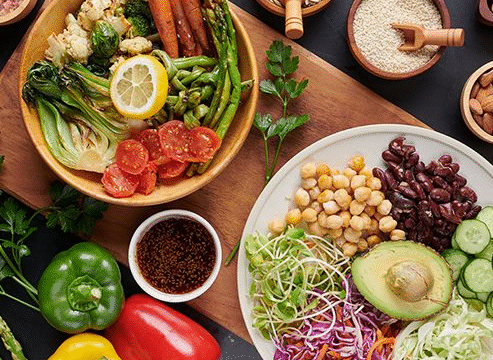Maintaining a healthy gut is one of the most important things you can do for your overall well-being. The gut is home to trillions of microorganisms that play a major role in digestion, nutrient absorption, immune function, and even mood regulation. What you eat has a direct effect on this delicate ecosystem. Choosing foods that are both gentle on digestion and low on the glycemic index (GI) can help nourish your gut while keeping blood sugar levels steady. Low GI foods are digested more slowly, providing sustained energy and supporting a balanced gut environment.
Understanding how the glycemic index works is the first step to making better choices. The GI measures how quickly carbohydrates in food raise blood sugar levels. Foods with a low GI value—typically below 55—are digested and absorbed more gradually. This steady release of glucose not only benefits energy and metabolism but also creates favorable conditions for beneficial gut bacteria to thrive. Rapid spikes and drops in blood sugar, which come from high GI foods, can cause inflammation and disrupt the gut microbiome.
Among the best low GI foods for gut health are whole grains, legumes, fruits, vegetables, nuts, and fermented products. Each of these categories provides different nutrients that support digestion and help maintain a balanced gut flora. Whole grains such as barley, oats, quinoa, and brown rice are excellent examples. They are rich in dietary fiber, especially soluble fiber, which acts as a prebiotic. Prebiotics feed the good bacteria in the gut, helping them multiply and maintain a healthy balance. Regularly including these grains in your meals can improve bowel regularity and reduce bloating.
Oats are particularly valuable because they contain beta-glucan, a type of soluble fiber that forms a gel-like substance in the digestive tract. This helps slow the absorption of glucose and supports a feeling of fullness while nourishing beneficial gut microbes. Cooking oats into porridge or overnight oats with yogurt and fruit creates a nutrient-dense, low GI breakfast that promotes gut balance.
Legumes such as lentils, chickpeas, and beans are another powerful addition to a gut-friendly, low GI diet. They are packed with fiber and plant-based protein, making them a satisfying option that keeps digestion smooth. The resistant starch found in legumes acts as a prebiotic, reaching the colon where it fuels healthy bacteria. Over time, this can improve gut diversity and strengthen the intestinal lining. Soaking or sprouting legumes before cooking helps reduce compounds that can cause gas, making them easier to digest for sensitive stomachs.
Fruits also play a major role in supporting gut health, and many are naturally low on the glycemic index. Apples, pears, berries, cherries, and plums are great examples. They contain both soluble and insoluble fiber, as well as natural antioxidants that help protect the gut lining. Berries, in particular, are rich in polyphenols, which have anti-inflammatory properties and help beneficial bacteria grow. Choosing whole fruits rather than fruit juices is important, since juices tend to have a higher GI and lack the fiber that the gut needs to stay balanced.
Vegetables are essential for a healthy gut and are almost always low in GI value. Non-starchy vegetables like broccoli, spinach, kale, zucchini, cauliflower, and asparagus provide essential vitamins and minerals along with prebiotic fibers. Garlic, onions, and leeks are especially beneficial because they contain inulin, a natural prebiotic compound that supports the growth of Bifidobacteria in the colon. Regularly consuming a variety of vegetables ensures your gut gets a mix of nutrients that strengthen digestion and immunity.
Nuts and seeds also belong on the list of the best low GI foods for gut health. Almonds, walnuts, chia seeds, flaxseeds, and pumpkin seeds are rich in healthy fats and fiber. These nutrients help reduce inflammation in the gut and support the production of short-chain fatty acids, which are vital for intestinal health. Chia and flaxseeds are particularly helpful because they form a gel when mixed with water, aiding smooth digestion and preventing constipation. Sprinkling them over yogurt, salads, or oatmeal is an easy way to increase fiber intake.
Fermented foods deserve a special mention when discussing gut health. They contain probiotics—live beneficial bacteria that help maintain a healthy microbial balance in the gut. Yogurt with live cultures, kefir, kimchi, sauerkraut, and miso are all excellent examples. While most fermented foods are naturally low GI, it is still wise to check for added sugars in some flavored versions, as they can raise the GI and counteract the gut-friendly benefits. Combining fermented foods with low GI ingredients, such as vegetables or whole grains, enhances their effects and supports digestion throughout the day.
Another group of foods that contribute to both a healthy gut and a stable glycemic response are starchy vegetables that have been cooked and cooled, such as potatoes or sweet potatoes. When these foods are cooled after cooking, part of their starch turns into resistant starch. This type of carbohydrate behaves more like fiber in the digestive system, providing food for beneficial bacteria and improving insulin sensitivity. Using cooled potatoes in a salad with olive oil and herbs can be a delicious and healthful way to include resistant starch in your meals.
A balanced low GI diet for gut health does not only depend on the foods themselves but also on how they are combined. Pairing carbohydrates with protein, fat, or fiber slows down digestion and reduces the overall glycemic impact of a meal. For example, eating a bowl of brown rice with grilled fish and steamed vegetables is more beneficial than having rice alone. This balanced approach keeps blood sugar steady while ensuring the gut receives diverse nutrients.
Hydration also plays a key role in supporting the gut. Water helps fiber move through the digestive tract efficiently, preventing constipation and discomfort. Herbal teas such as ginger or peppermint tea can further aid digestion by soothing the stomach and reducing bloating. Staying hydrated throughout the day enhances the positive effects of low GI foods and keeps the digestive process smooth.
Making gradual changes toward a low GI, gut-friendly diet can lead to lasting benefits. Start by replacing refined grains with whole grains, adding legumes to your weekly meals, and including a variety of vegetables in every dish. Opt for fresh fruit instead of sugary snacks, and experiment with fermented foods to find what works best for your taste. Over time, these habits can improve not only digestion but also energy levels, mood, and immune resilience.
In conclusion, the best low GI foods for gut health are those that provide steady energy, rich fiber, and beneficial compounds that nurture your body from the inside out. Whole grains, legumes, fruits, vegetables, nuts, seeds, and fermented foods all play vital roles in supporting a balanced gut microbiome. Choosing these foods regularly helps create a harmonious digestive environment where beneficial bacteria can flourish. By focusing on whole, unprocessed, and low GI foods, you are not only supporting your gut health but also laying the foundation for long-term wellness and vitality.






